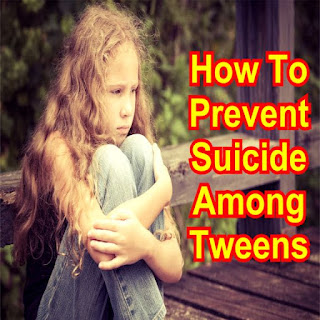How To Prevent Suicide Among Tweens
Suicide is the second leading cause of death for children ages 10 to 14, who are online more than ever before. A center in New Mexico is working to change that.
SANTA FE, N.M. ― As with most after-school clubs, the meeting inside Ortiz Middle School begins with kids bumping and jostling into a classroom. A boy with green hair grabs a bag of chips off a table, taking a seat next to a girl. He invites her to share the snack. Another student adjusts the tie-dye bandana she’s using as a headband and shows her friend a funny meme on her phone.
The adult advisers, Robert Kristy and Katrina Koehler, ask everyone to take a seat on the floor in a circle, assuring them that pizza has been ordered and will be delivered shortly.
Koehler asks, “So, on a scale of happy to crappy, how’s your suicide?”
Forget the volleyball team or chess club. This group, which has been meeting weekly since 2015, was formed in the spirit of Project Semicolon, an international movement that began when activist Amy Bleuel shared her mental health struggles on social media. “[E]veryone who self harms, is suicidal, depressed, has anxiety, is unhappy, going through a broken heart, just lost a loved one, etc. draw a semicolon on your wrist,” she posted to Twitter in 2013. “[A] semicolon represents a sentence the author could’ve ended, but chose not to. [T]he author is you and the sentence is your life.”
All over the world, people embraced the punctuation mark, with many acquiring real semicolon tattoos. The Sky Center, an independent mental health clinic that operates out of Ortiz Middle School, also adopted the semicolon for a suicide survivors group created as part of its effort to provide free, in-person support to a growing number of distressed young people.
For years, experts across the United States have been working to address the mental health crisis among teens and young adults. But a growing number of indicators suggest that the same emotional problems ― anxiety, depression and even suicide ― are affecting children at increasingly younger ages.
Even before the onset of the coronavirus pandemic, there were worrying signs. The number of anxiety disorders diagnosed by health care providers in children as young as 6 has gone up 17% in just five years, according to the most recent data.
Self-injury, or intentional cutting, scratching, burning or hitting, has been measured as high as 30% in some populations of girls, with the age of onset around 12 or 13.
These intentional self-harming behaviors ― often separate from suicidal intentions ― have become so widespread that a new disorder, non-suicidal self-injury (NSSID), was added to the 2013 DSM-5.
Bark, an app that alerts parents when their children encounter worrisome content online, analyzed the online activity of more than a million tweens in 2019. A staggering 55% of CONTINUE READING: How To Prevent Suicide Among Tweens | HuffPost



